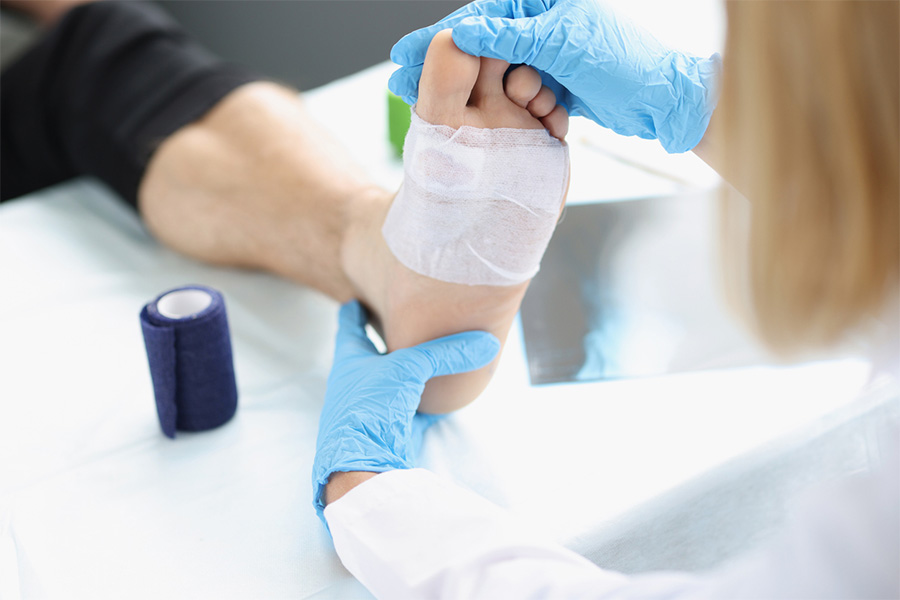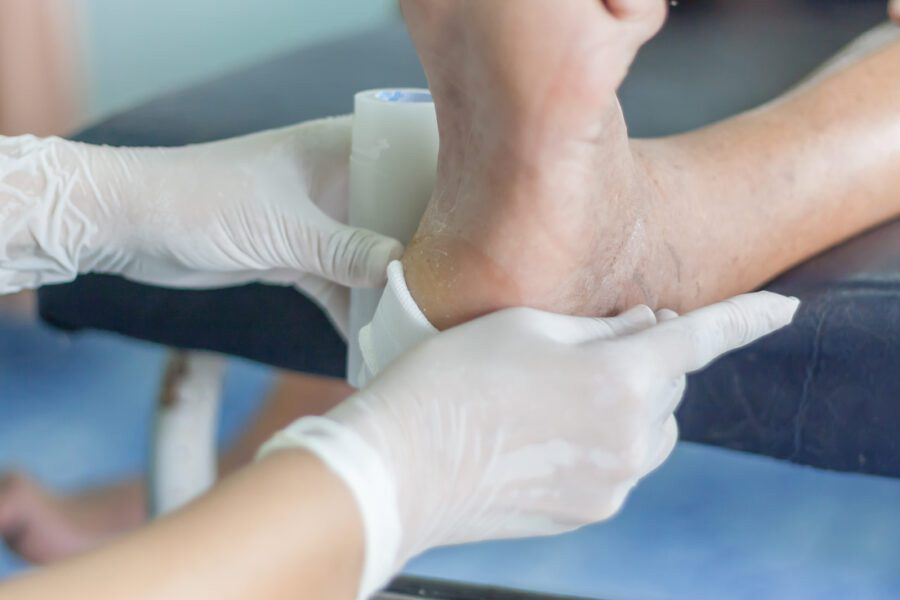People with diabetes have to take special care of their bodies, particularly their legs and feet. This is because diabetics are prone to wounds, and diabetic wounds take significantly longer to heal. The longer a wound takes to heal, the bigger the risk for it to get infected. If a diabetic develops a wound that does not heal or becomes infected, they are at a high risk of needing amputation.
According to the Centers for Disease Control (CDC), a high percentage of the 30 million diabetics in the United States suffer from complications due to wound infections. In order to protect yourself, it’s important to know how to treat a diabetic wound. Here are some tips.
Diabetic Wounds
Small cuts, scrapes, ulcerations, and minor burns can be shrugged off by a normal person. But for diabetics, any kind of break to the skin can lead to serious consequences – no matter how small.
Diabetes slows down the healing process, making you prone to developing infections that can even go down into the bones. Because of this, a wound of any size should be checked by a medical professional as early as possible.
Diabetic Wound Treatment
The treatment of a diabetic wound involves fostering an environment that promotes healing and lowers the risk of infection. If you develop a wound, see a doctor as soon as possible to do this. When you see a doctor regarding a wound, here are some of the steps they’ll take:
- The doctor will first perform a debridement, where he will thoroughly clean the wound area and remove the necrotic or dead and thickened skin from the wound to encourage faster healing. Again, only a medical professional is trained and experienced to know which tissue should be removed without creating further issues. Debriding should be done on all diabetic wounds.
- The next step is to try to control the infection. The physician will apply topical antibiotic ointment as well as supply you with oral antibiotics to reduce the risk of infection. Your doctor will also instruct you on how often to change the dressing as well as how to do it safely and correctly.
- Lastly, proper diabetic wound healing requires removing pressure from the wound area. The doctor may apply an unremovable total contact cast (TCC), removable cast walkers, or provide healing sandals. This is to redistribute pressure evenly throughout the affected leg area to remove any pressure that may hamper wound healing. This may not be applicable for all wounds. Your doctor will determine if you need this based on the size and location of your wound.
For successful diabetic wound healing, you should keep your blood glucose levels in normal range. Be mindful of your wounds and monitor them for any changes. Cleanse the wounds daily and apply the recommended dressing. Avoid walking barefoot and without the use of your assistive devices.
Diabetic Wound Treatment in Cincinnati
The physicians at Cincinnati Foot & Ankle Care provide high quality diabetic foot care to patients in Cincinnati. It is highly recommended that patients with diabetes see a podiatrist every two to three months.
If you have developed a wound, please see us immediately. Our compassionate foot and ankle specialists treat a wide range of diabetic foot issues, from infections and ulcerations to neuropathy.
For your convenience, we have extended our clinic hours, because we know emergencies can develop out of nowhere. To make an appointment, call the clinic nearest you or request an appointment now.
Share

People with diabetes often experience difficulty healing wounds.




